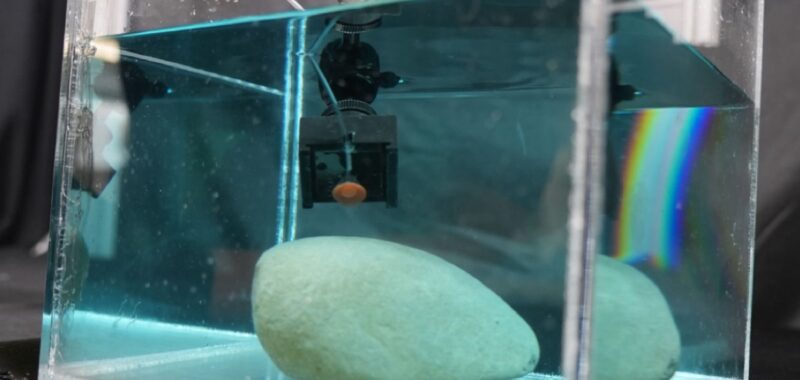Over the last few years, Virginia Tech scientists have been looking to the octopus for inspiration to design technologies that can better grip a wide variety of objects in underwater environments. Their latest breakthrough is a special switchable adhesive modeled after the shape of the animal’s suckers, according to a new paper published in the journal Advanced Science.
“I am fascinated with how an octopus in one moment can hold something strongly, then release it instantly. It does this underwater, on objects that are rough, curved, and irregular—that is quite a feat,” said co-author and research group leader Michael Bartlett. “We’re now closer than ever to replicating the incredible ability of an octopus to grip and manipulate objects with precision, opening up new possibilities for exploration and manipulation of wet or underwater environments.”
As previously reported, there are several examples in nature of efficient ways to latch onto objects in underwater environments, per the authors. Mussels, for instance, secrete adhesive proteins to attach themselves to wet surfaces, while frogs have uniquely structured toe pads that create capillary and hydrodynamic forces for adhesion. But cephalopods like the octopus have an added advantage: The adhesion supplied by their grippers can be quickly and easily reversed, so the creatures can adapt to changing conditions, attaching to wet and dry surfaces.
From a mechanical engineering standpoint, the octopus has an active, pressure-driven system for adhesion. The sucker’s wide outer rim creates a seal with the object via a pressure differential between the chamber and the surrounding medium. Then muscles (serving as actuators) contract and relax the cupped area behind the rim to add or release pressure as needed.
There have been several attempts to mimic cephalopods when designing soft robotic grippers, for example. Back in 2022, Bartlett and his colleagues wanted to go one step further and recreate not just the switchable adhesion but also the integrated sensing and control. The result was Octa-Glove, a wearable system for gripping underwater objects that mimicked the arm of an octopus.
Improving the Octa-Glove
Grabbing and releasing underwater objects of different sizes and shapes with an octopus-inspired adhesive. Credit: Chanhong Lee and Michael Bartlett
For the adhesion, they designed silicone stalks capped with a pneumatically controlled membrane, mimicking the structure of octopus suckers. These adhesive elements were then integrated with an array of LIDAR optical proximity sensors and a micro-control for the real-time detection of objects. When the sensors detect an object, the adhesion turns on, mimicking the octopus’s nervous and muscular systems. The team used a neoprene wetsuit glove as a base for the wearable glove, incorporating the adhesive elements and sensors in each finger, with flexible pneumatic tubes inserted at the base of the adhesive elements.

